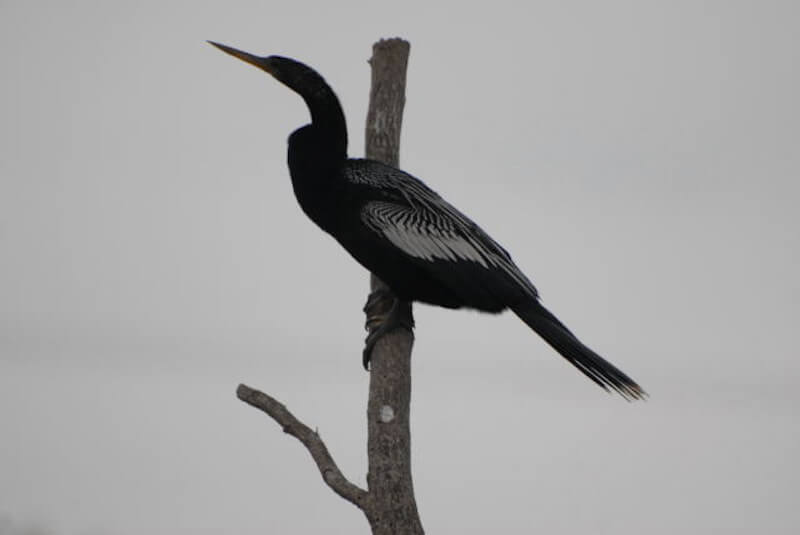Darters
| Order: SULIFORMES - Family: ANHINGIDAE |
| 4 Species currently existing - 1 in region |
Darters are a group of long-necked diving birds belonging to the genus Anhinga. They are also known as snakebirds due to their long, slender necks that resemble a snake when they swim with just their heads and necks above the water. Here are some key points about darters: Read in Spanish
Physical Characteristics:
Long Neck and Bill: Darters have long, serpentine necks that they use to spear and capture fish underwater. They have sharp, pointed bills that are well adapted for catching and holding onto their slippery prey.
Plumage: Darters have dark plumage, often black or dark brown, which helps them blend in with their aquatic habitats. Their bodies are streamlined for efficient swimming and diving.
Webbed Feet: Darters have partially webbed feet that aid them in swimming and navigating in water. Their feet are positioned far back on their bodies, which helps them move gracefully through the water.
Habitat:
Aquatic Environments: Darters are commonly found in tropical and subtropical regions near freshwater habitats such as ponds, lakes, marshes, rivers, and swamps. They prefer still or slow-moving waters where they can hunt for fish effectively.
Diet and Feeding Behavior:
Fish Predators: Darters primarily feed on fish and aquatic invertebrates. They hunt by swimming underwater and using their sharp bills to impale fish. After catching a fish, they surface to flip it into the air and swallow it headfirst.
Behavior:
Diving Abilities: Darters are proficient divers and can stay submerged for extended periods while hunting for fish. They propel themselves underwater using their webbed feet and maneuver with their long, snake-like necks.
Basking Behavior: Darters are often seen perching on branches or logs near the water's edge with their wings outspread. This behavior helps them dry their feathers and regulate their body temperature.
Reproduction:
Nesting: Darters build nests in trees near water, using sticks, twigs, and aquatic vegetation. Both male and female darters participate in nest construction.
Incubation and Parental Care: Darters share incubation duties, with both parents taking turns to warm the eggs. After hatching, both parents feed and care for the chicks until they fledge and become independent.
Conservation:
Threats: Darters face threats from habitat loss, pollution, hunting, and human disturbance. Destruction of wetlands and water pollution can impact their food sources and nesting sites.
Conservation Efforts: Conservation efforts focus on protecting wetland habitats, regulating water quality, and controlling human activities near darter populations to ensure their survival. Darters are remarkable diving birds known for their sleek bodies, long necks, and proficient swimming abilities. They play a vital role in aquatic ecosystems by controlling fish populations and contributing to the biodiversity of freshwater habitats.

Anhinga
Anhinga anhinga
Spanish Name: Pago-aguja Americano
Size: 34 in | 86 cm
Habitat: Freshwater sites, swamps
Height: <1000 m
Photo: © Luis A. Materon

